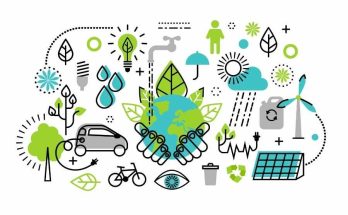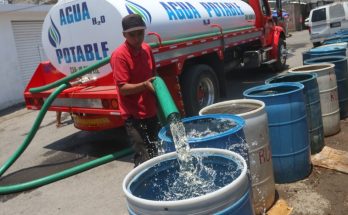By Alejandro Angulo
The global climate crisis is directly related to water resources. One of the crisis’ main effects is the increased variability in the hydrological cycle, and ensuring access to a resilient and sustainable water supply. Sanitation services is a critical mitigation strategy. In order to adopt a comprehensive approach to climate change and water resource management, we need indicators that evaluate the effects. It is essential to adopt a comprehensive approach to climate change and the management of water resources at the local and national level. Public policies are necessary for climate planning. Water management practices must be improved and strengthened so that authorities can make safe and informed decisions.
The goal of all these decisions is to increase the climate resilience of water resources and reduce the risk of water-related disasters. Management of water resources must be analyzed in the context of resilience, which means the ability of a system to adapt to new situations and operating conditions in order to maintain its functionality.
The consequences of climate change have already been observed in the Bajío area. They are increased droughts, decreased rainfall, and a greater frequency of extreme precipitation events. It is essential for the authorities to develop an infrastructure that adapts to these conditions. We need to ensure that in the coming years everyone has access to sustainable and resilient water and sanitation services. This is a critical strategy for mitigation and adaptation to climate change.
One suggestion is for a Resilience Index made up of two sub-indexes. A functionality sub-index would evaluate the level of service delivered by the water network in the event of a disruptive event. A topological vulnerability sub-index would evaluate the dependence of consumption nodes on vulnerable and non-vulnerable sources through network connections. The Resilience Index relies directly on the vulnerability parameter assigned to certain network nodes based on the effects of climate change. A detailed study of these effects is needed in order to avoid the uncertainty of global climate models and ensure a correct determination of vulnerability. Such a study would prevent underestimating or overestimating the system’s resilience.
The nodes of the water network can be grouped according to their function within the network, as follows.
- Water source nodes correspond to the watercourses that feed the city’s water network.
- Consumption nodes represent the different users of the network. Depending on the use given to the water, these nodes will correspond to residential, commercial, or industrial consumption, and irrigation of green areas and irrigation for agriculture.
- Treatment plant nodes represent drinking water treatment plants, sewage treatment plants, and industrial water treatment plants.
- Distribution nodes correspond to drinking water transport nodes within the network.
- Collection nodes correspond to sewage collection nodes within the network.
- Discharge Nodes represent watercourses where treated water is discharged and/or where the filtered water from agriculture and irrigation of green areas arrives.
The degree of vulnerability is already being differentiated by sector and by location in the metropolitan area of Querétaro. Likewise, the different sources of water (surface, underground, aqueducts, reservoirs, and treatment plants) must be assigned an estimated vulnerability value. This would be set according to the probable risk faced by these nodes in case of an occurrence of an extreme precipitation or drought.




